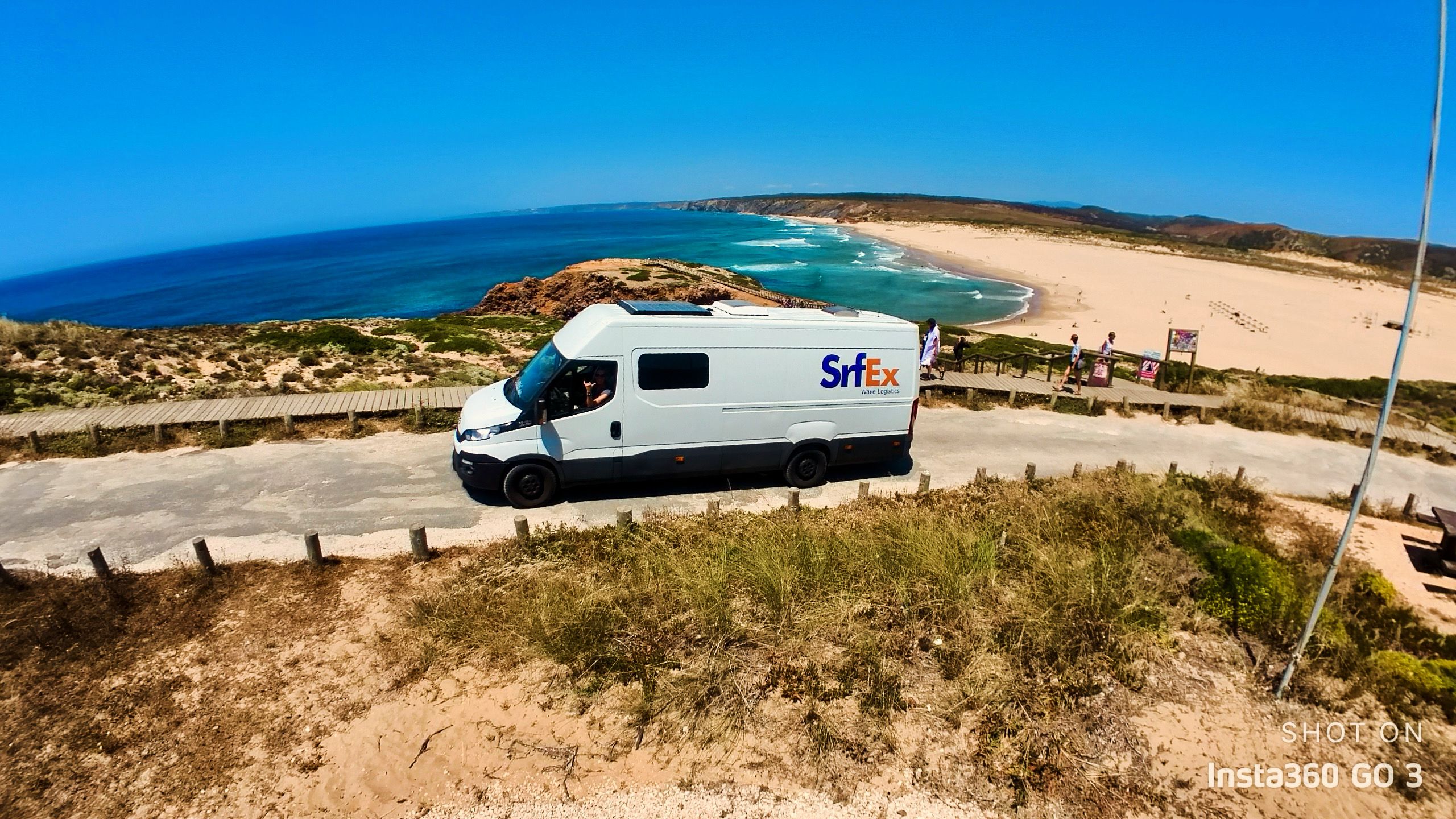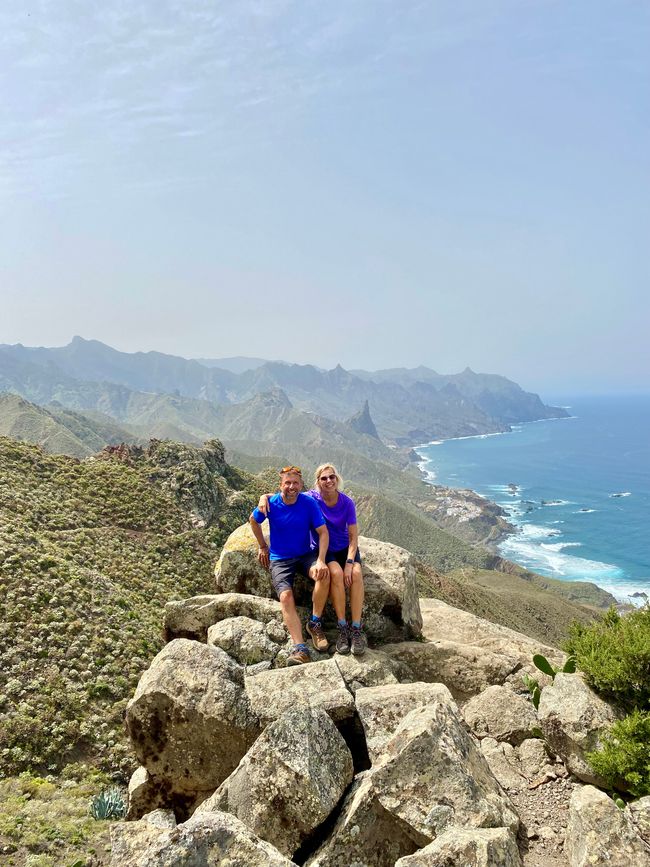
Coastal Nomads - Suzi, John & Betty
vakantio.de/coastal-nomads-suzi-john
Morocco floods us with sensory impressions in the first days!
प्रकाशित: 07.11.2024
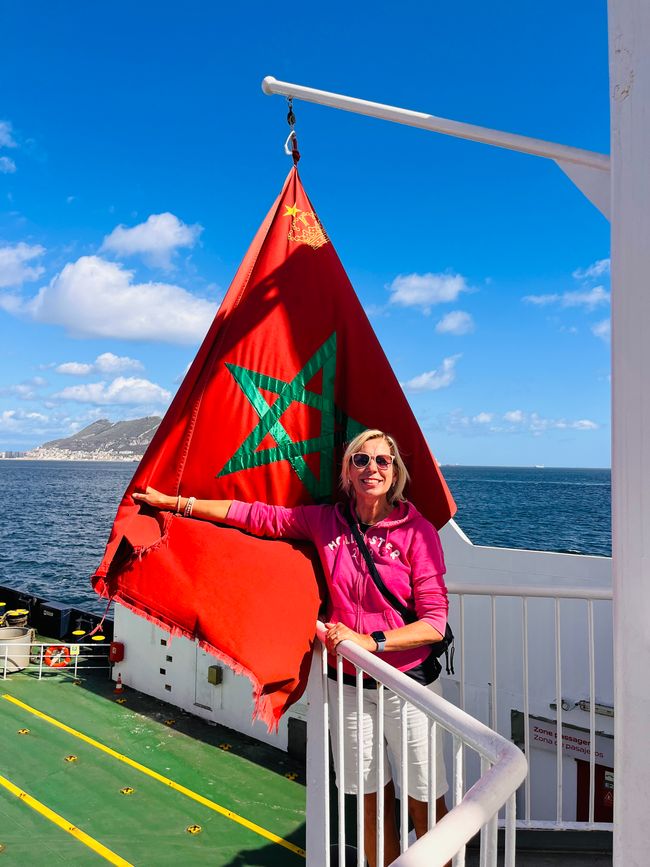

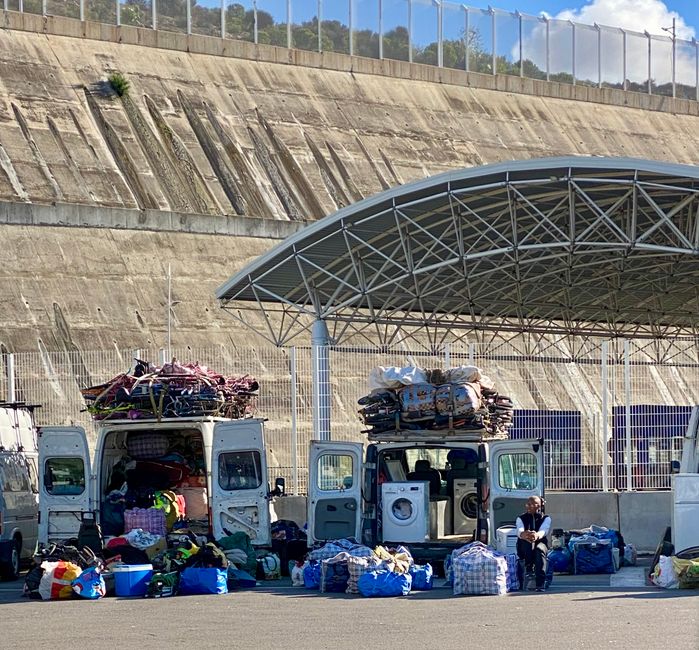
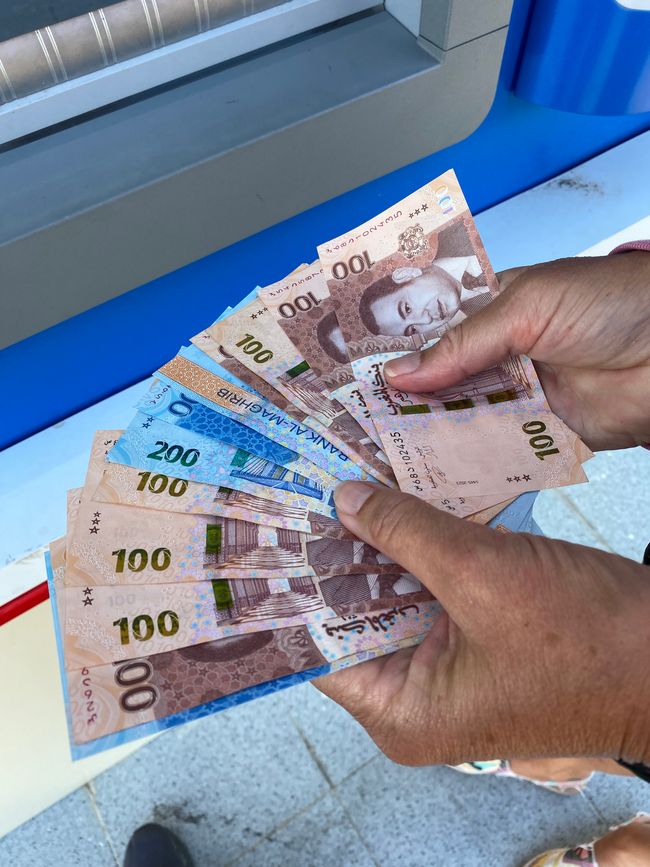
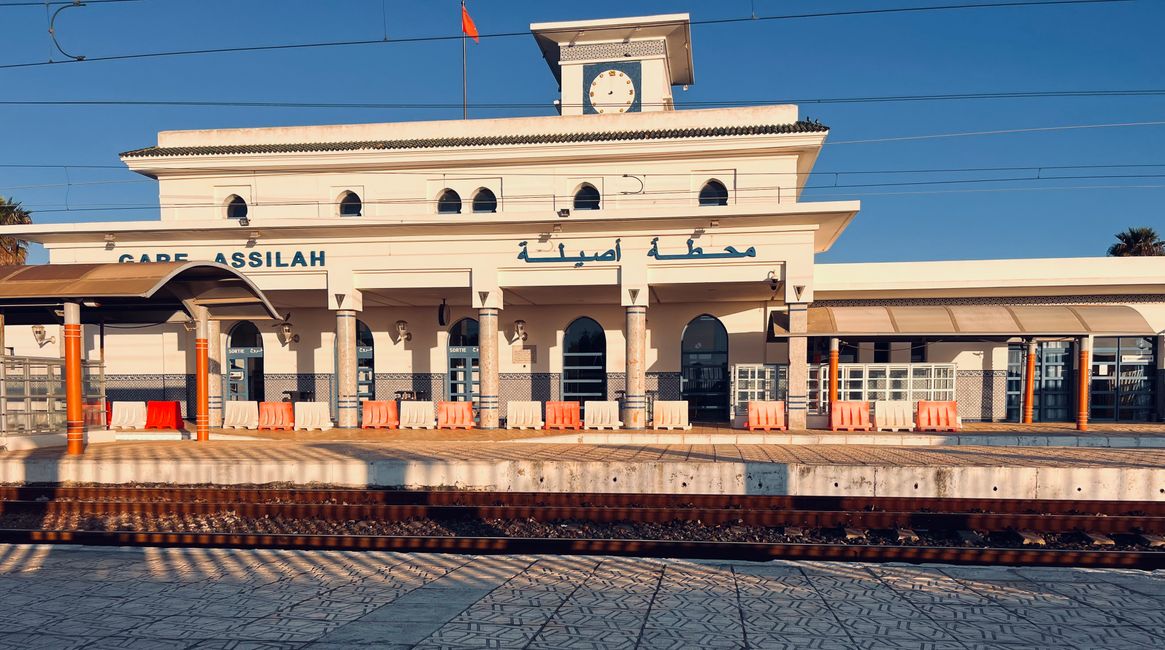
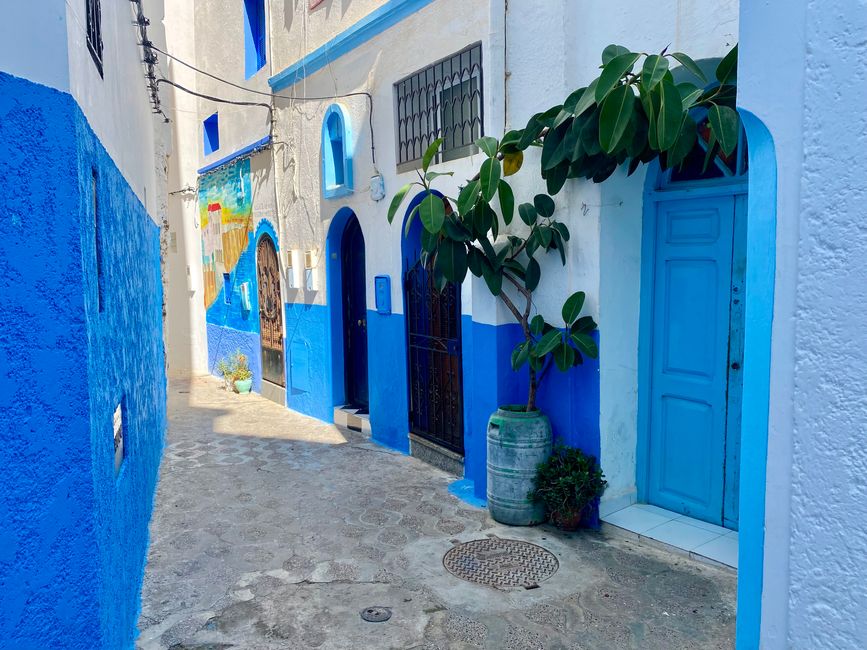
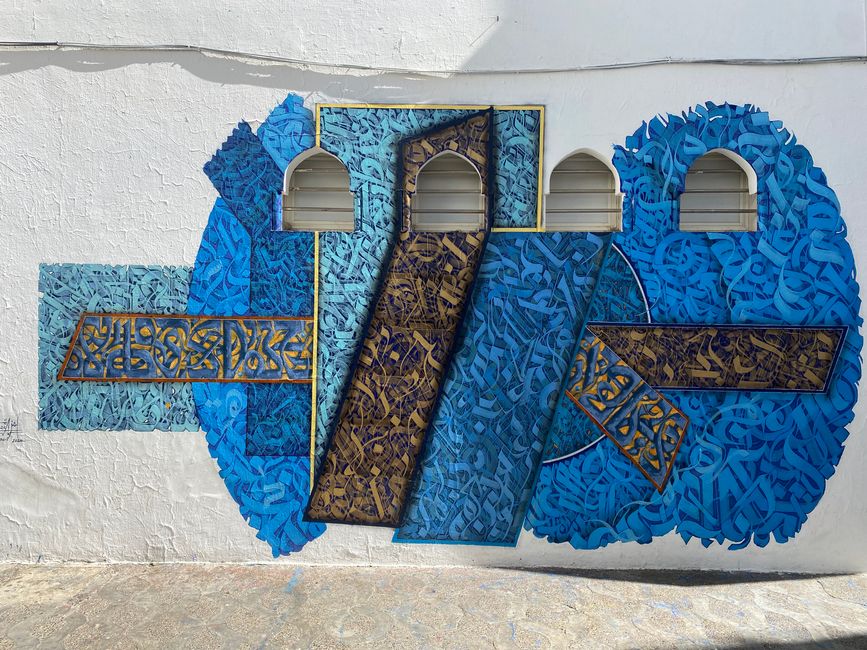
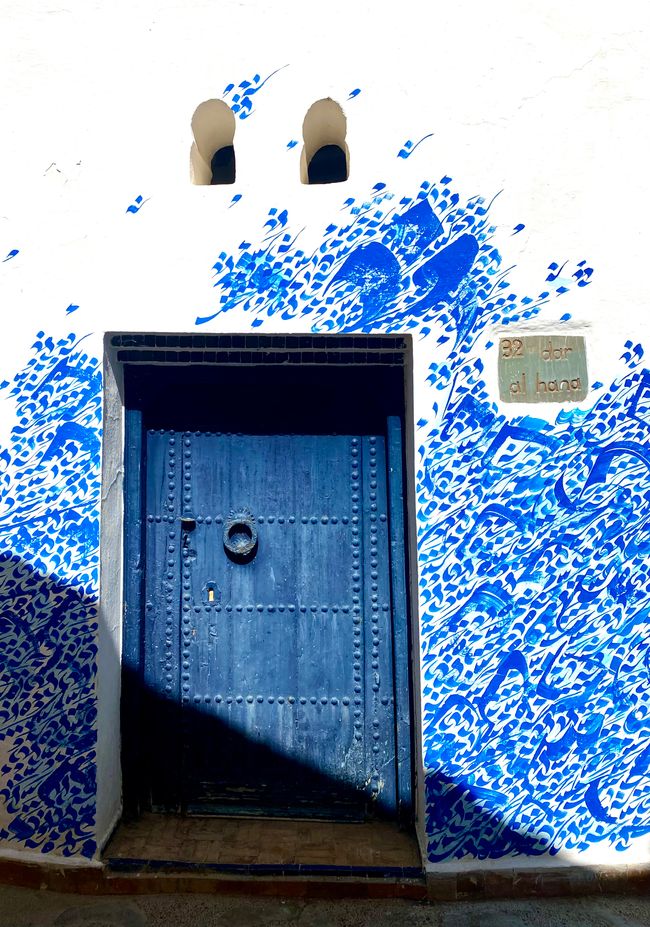
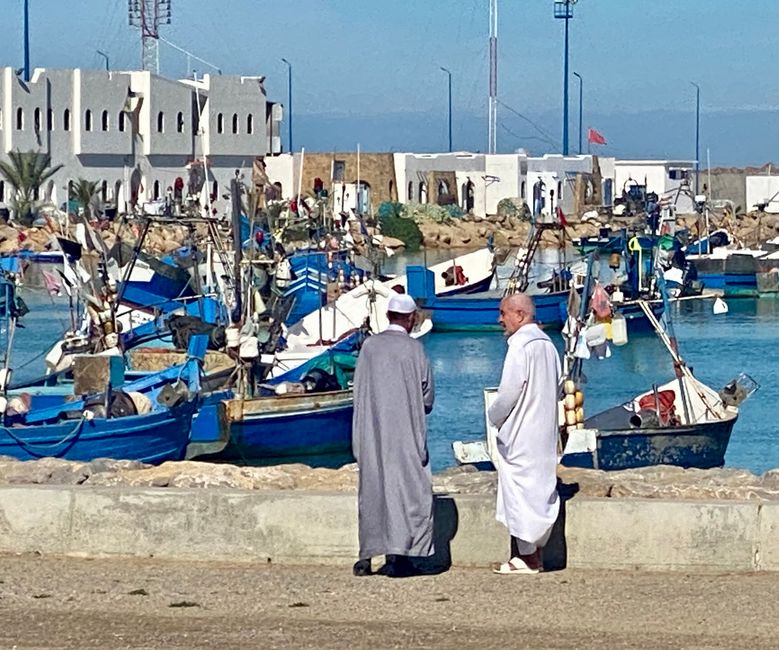
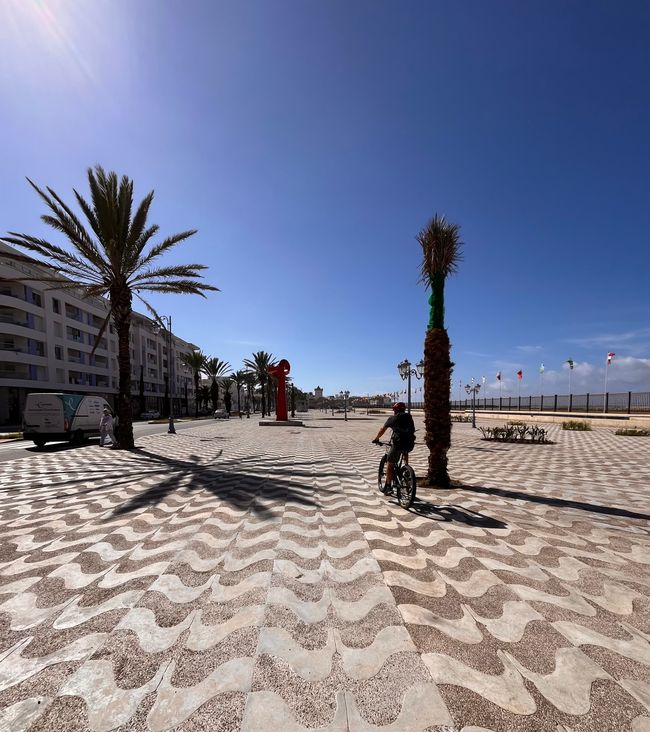
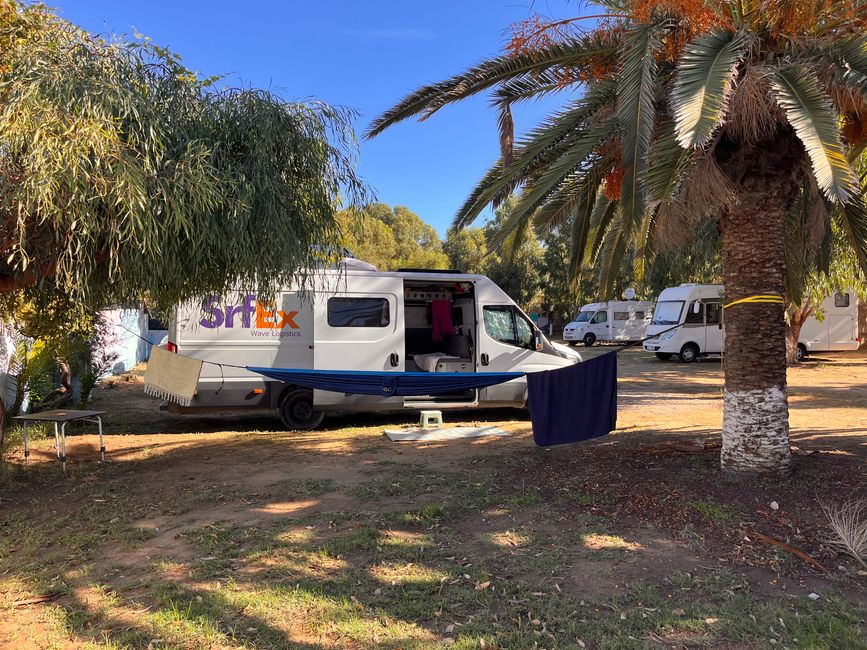

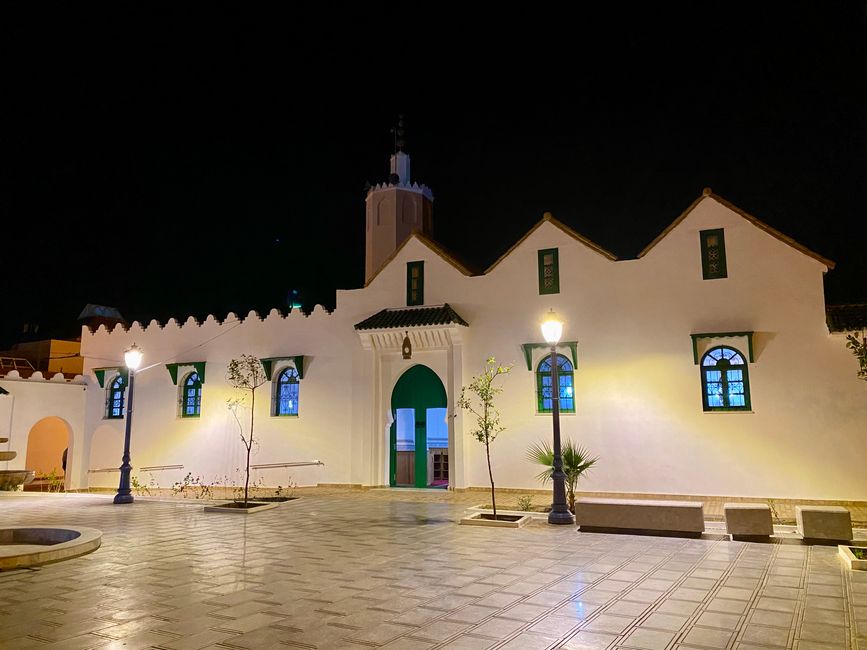
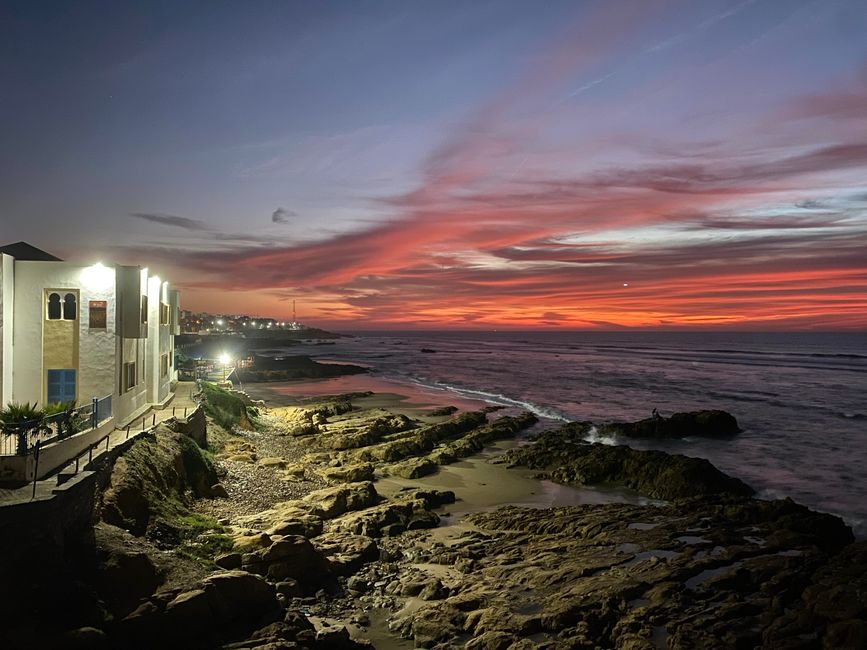
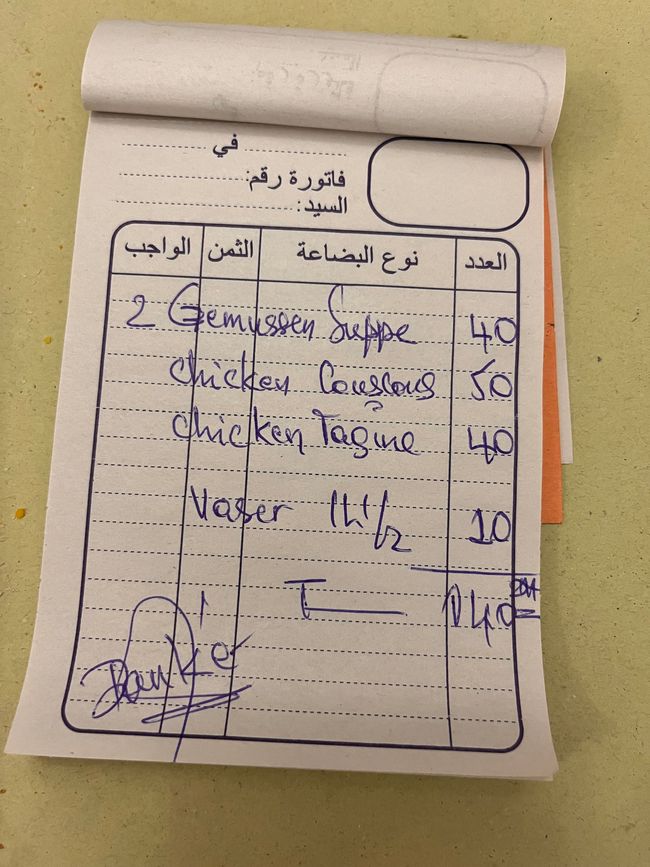
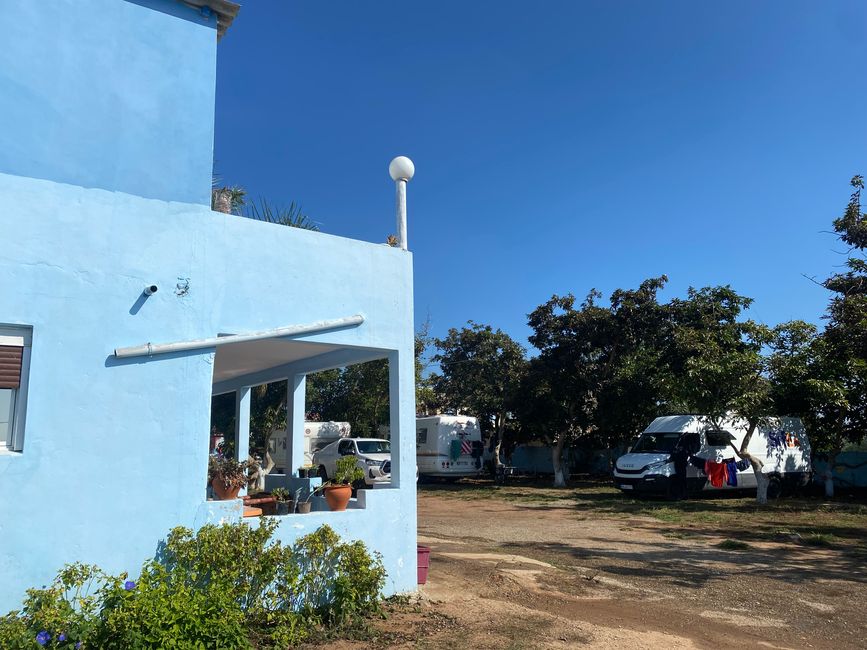
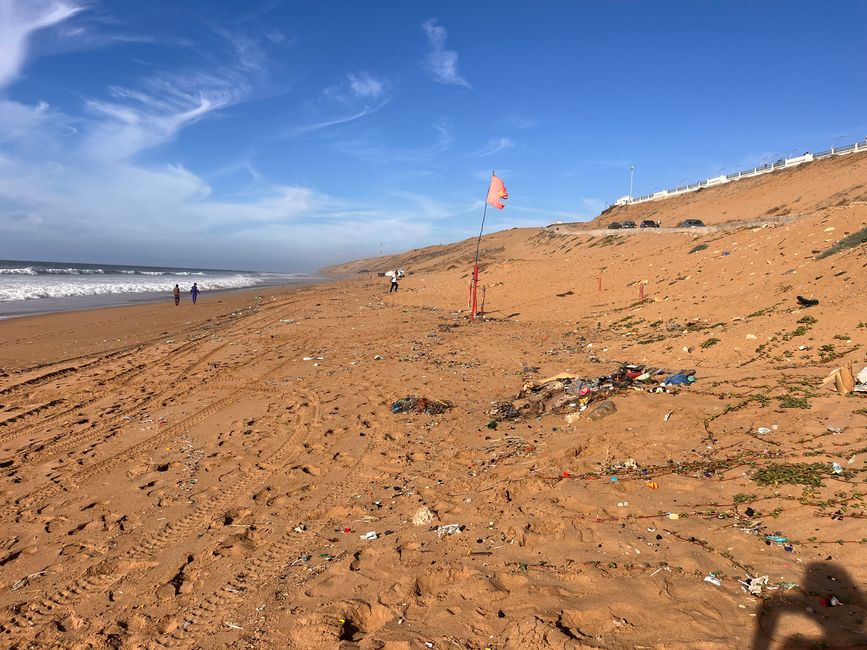
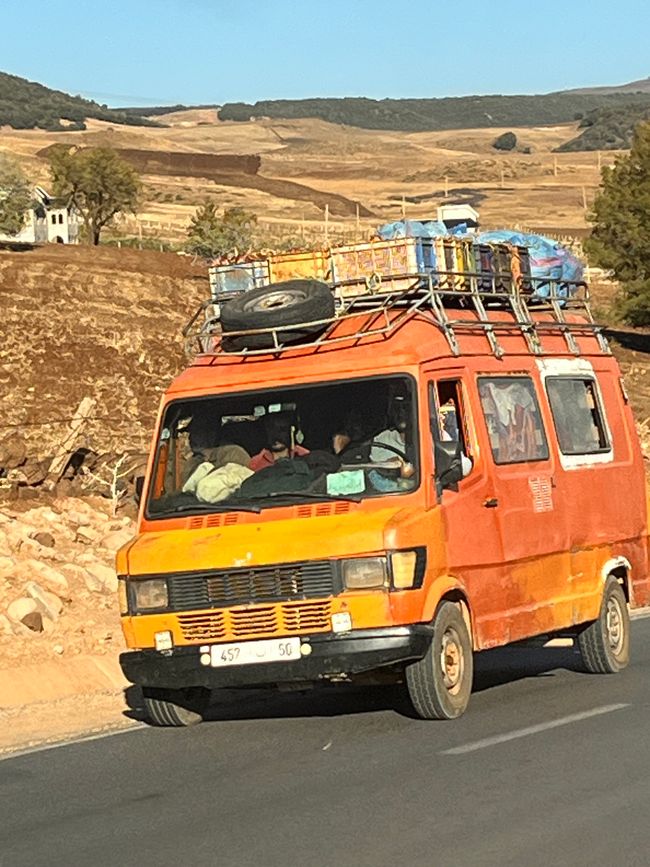
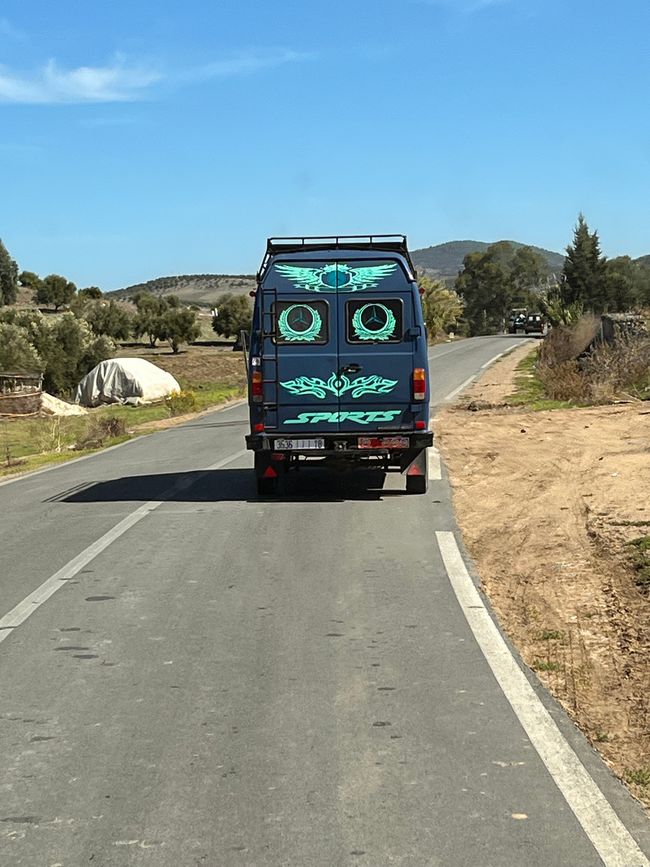
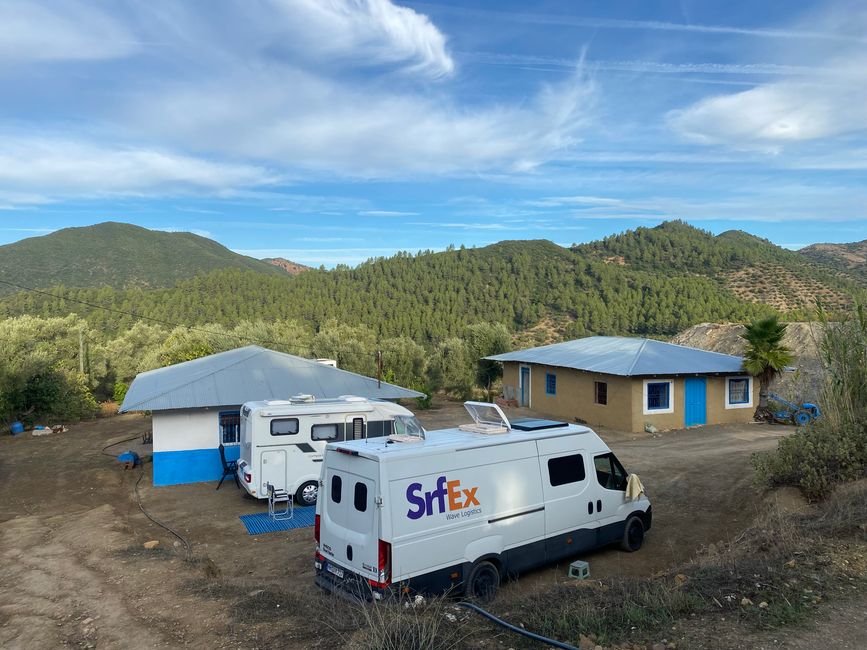
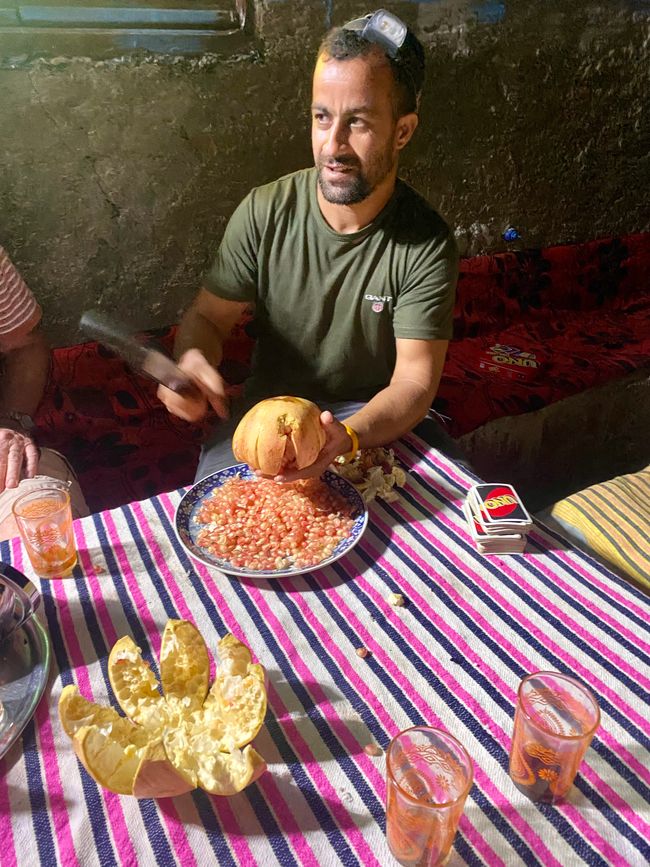
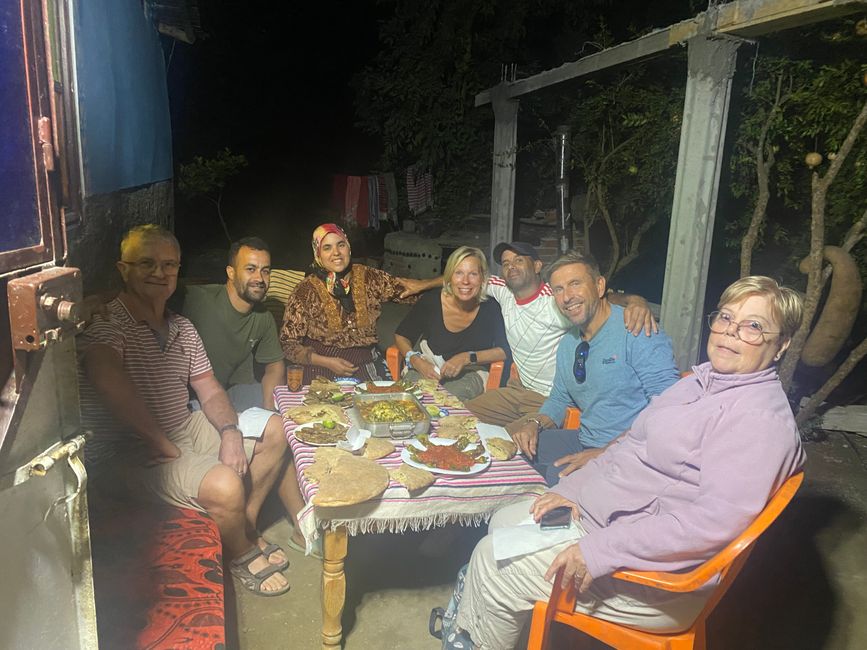
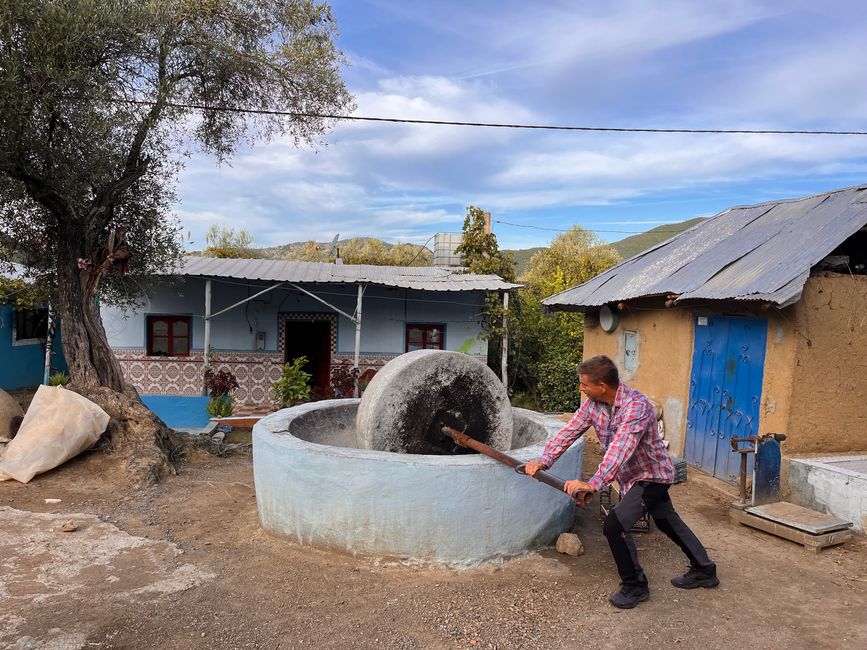

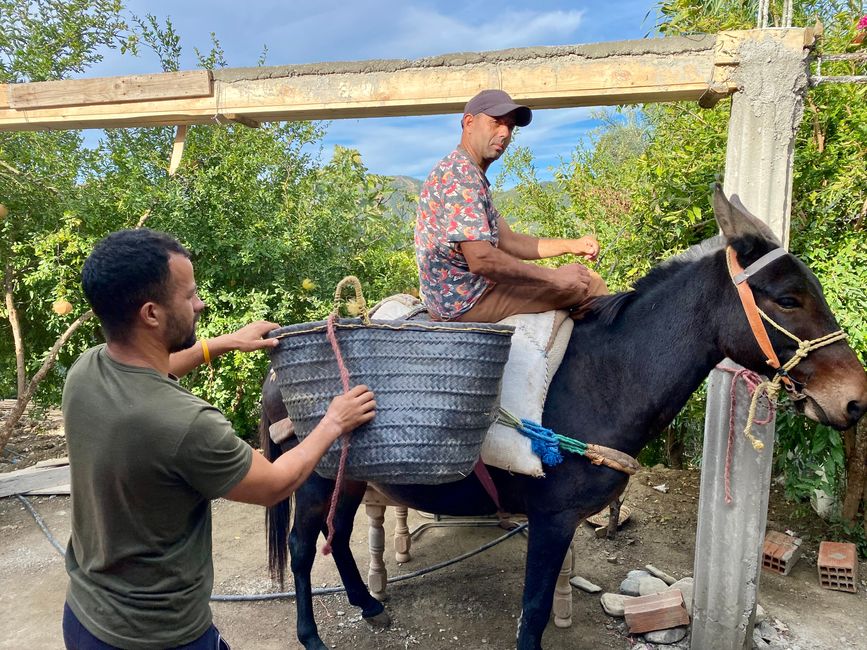
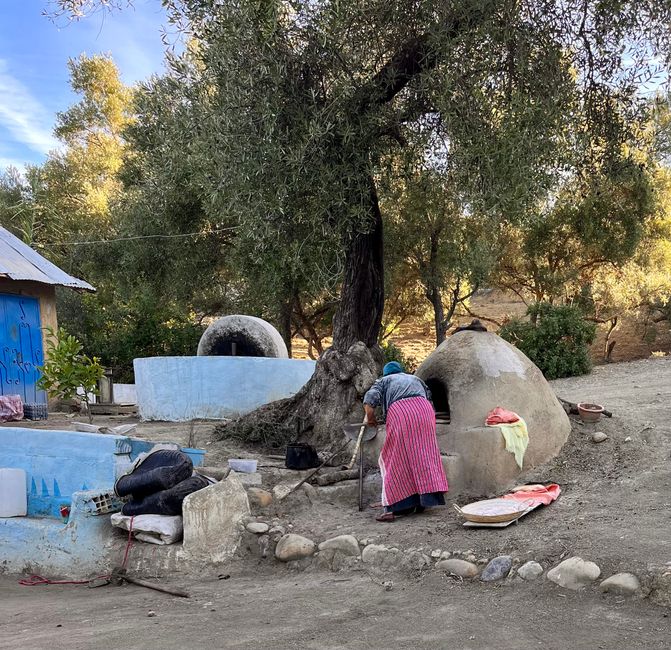
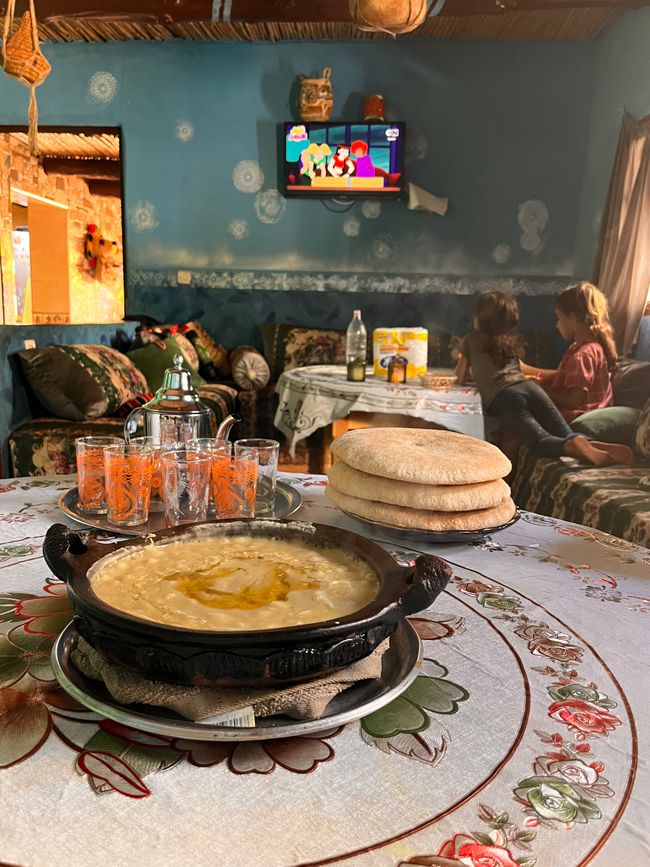

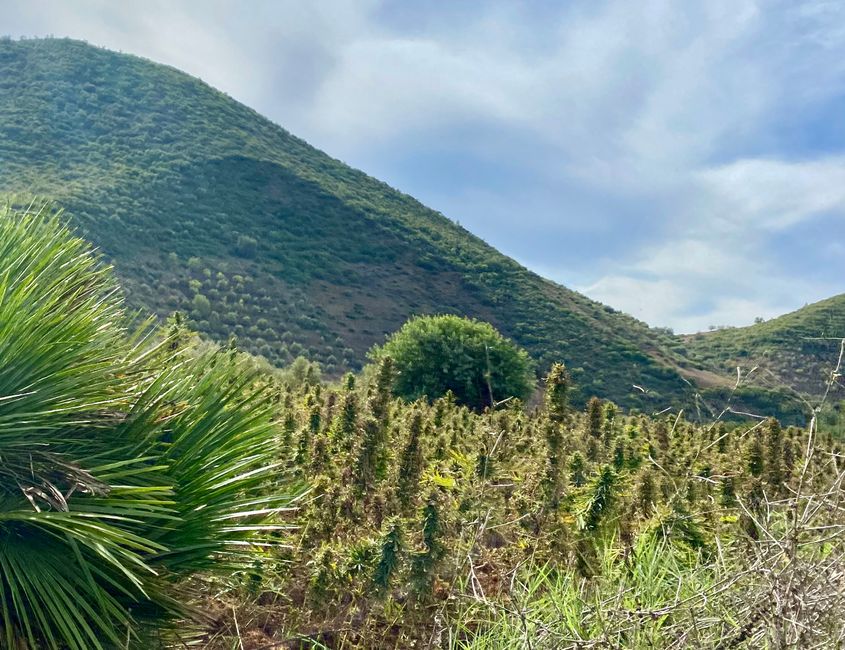
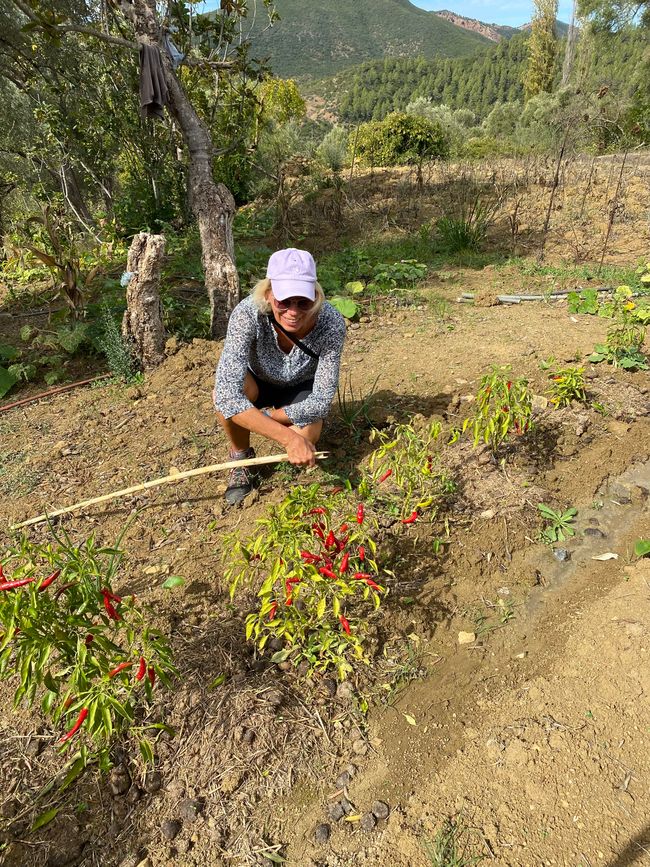
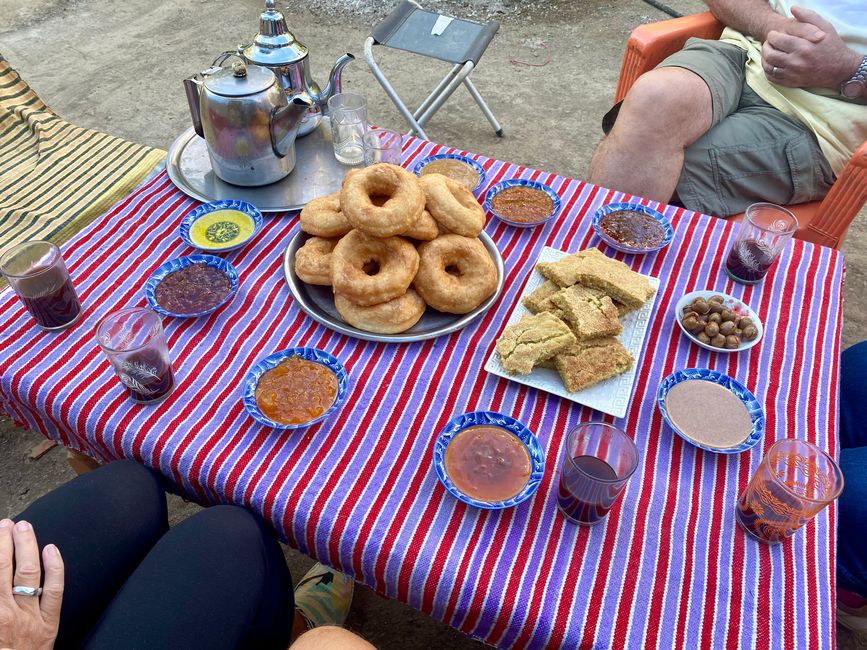
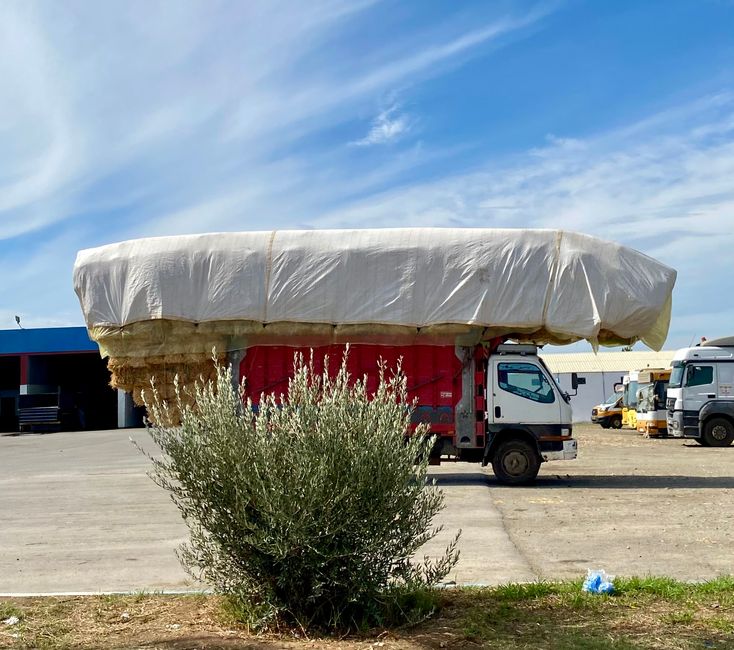
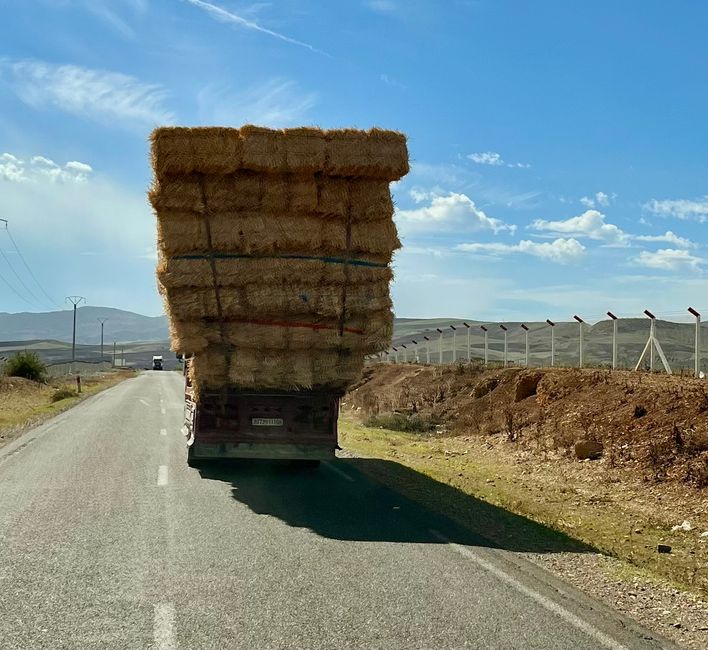
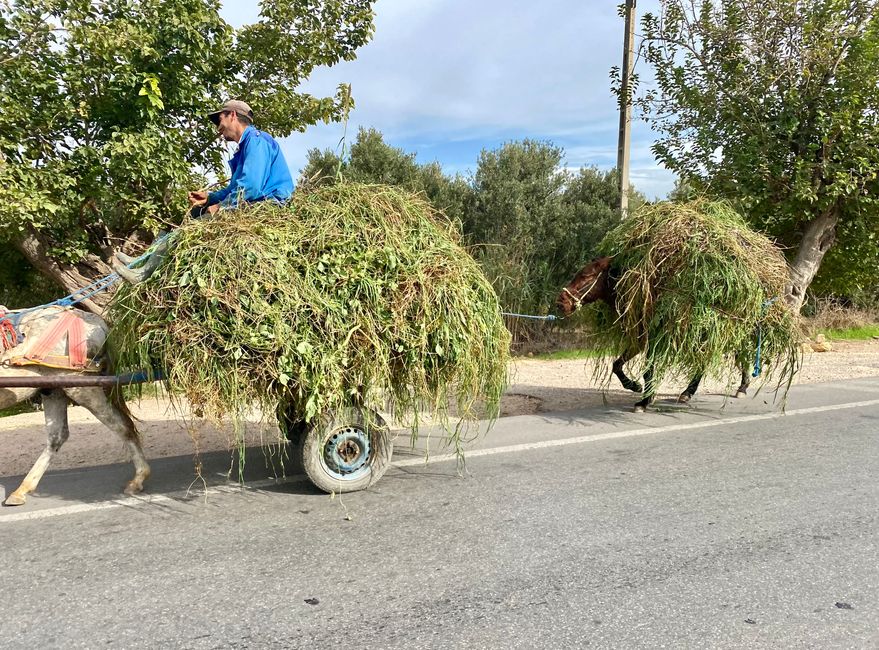
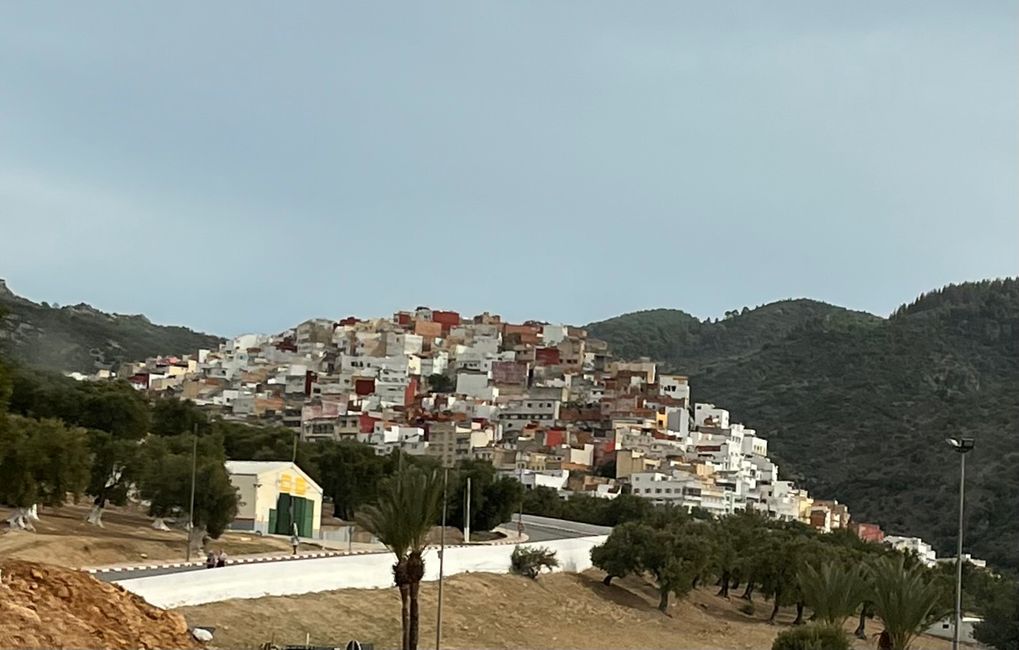
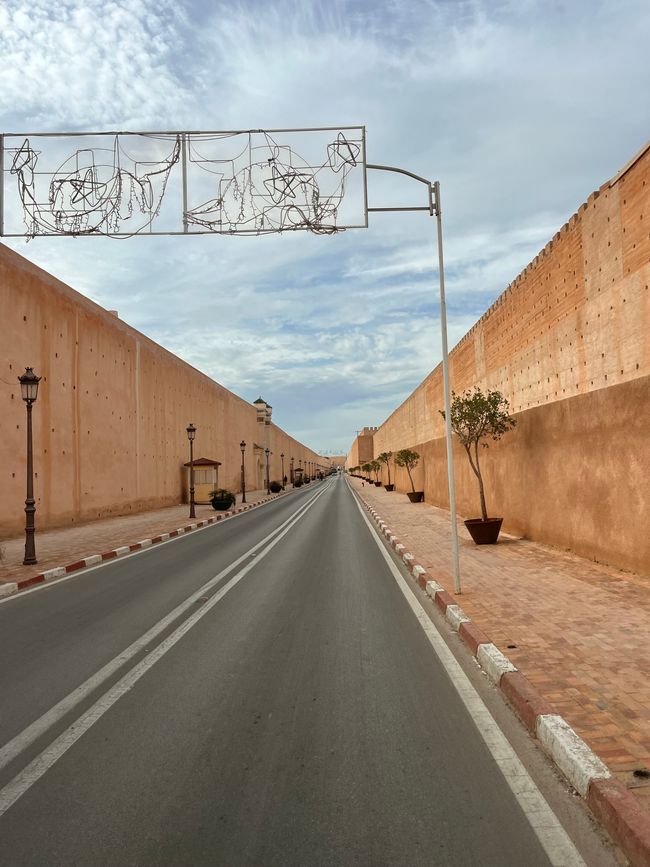
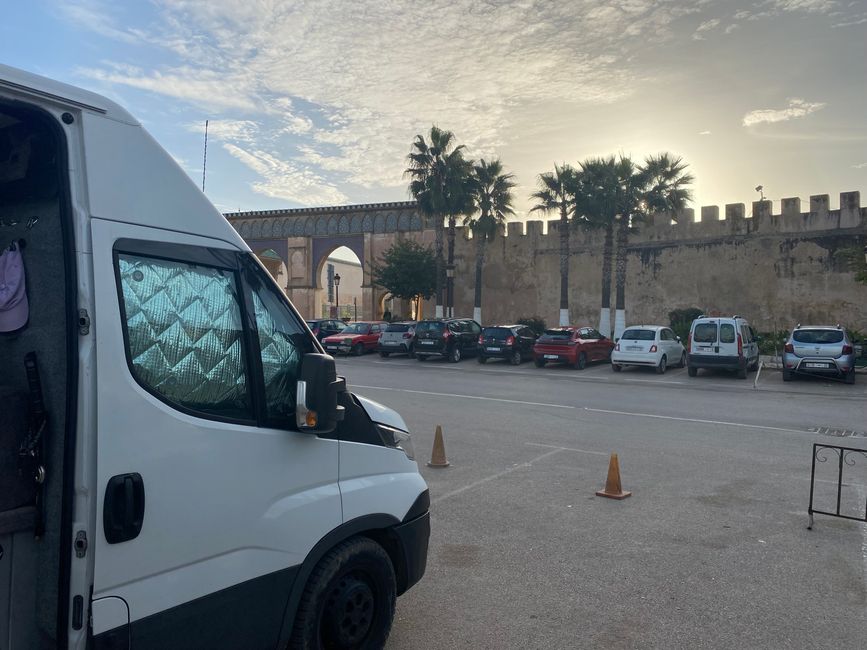
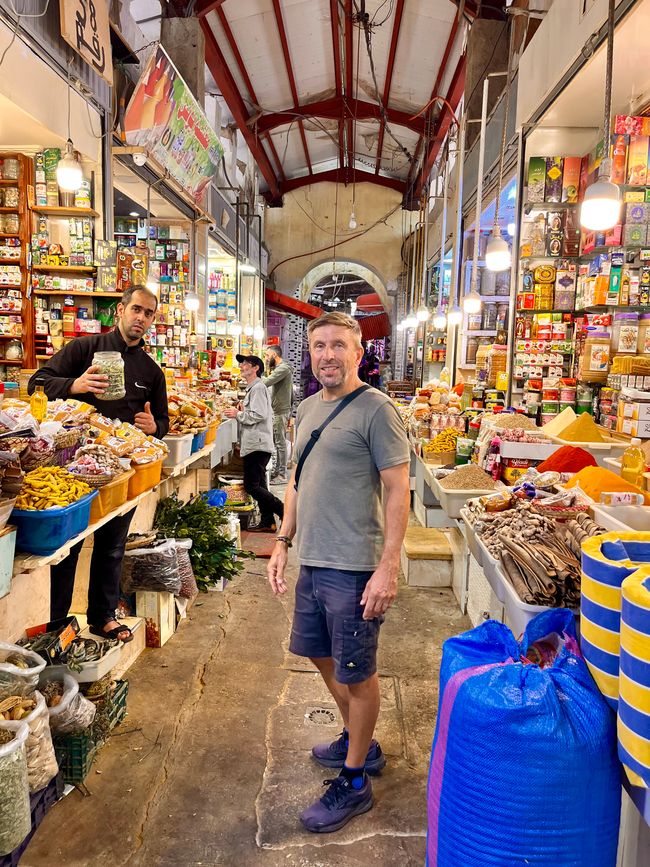
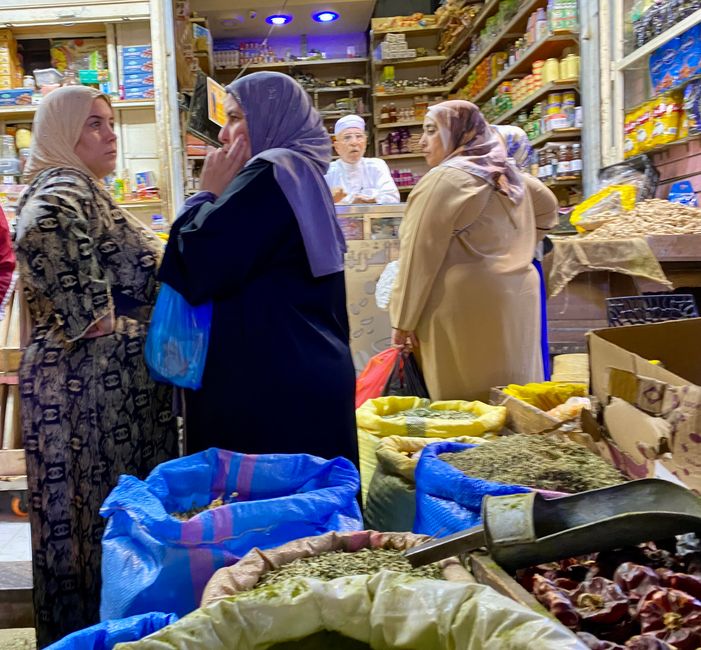
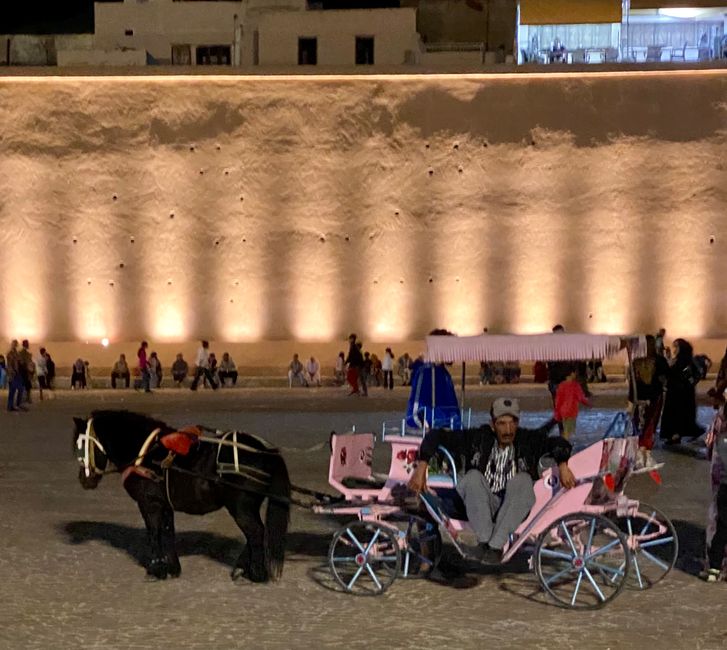

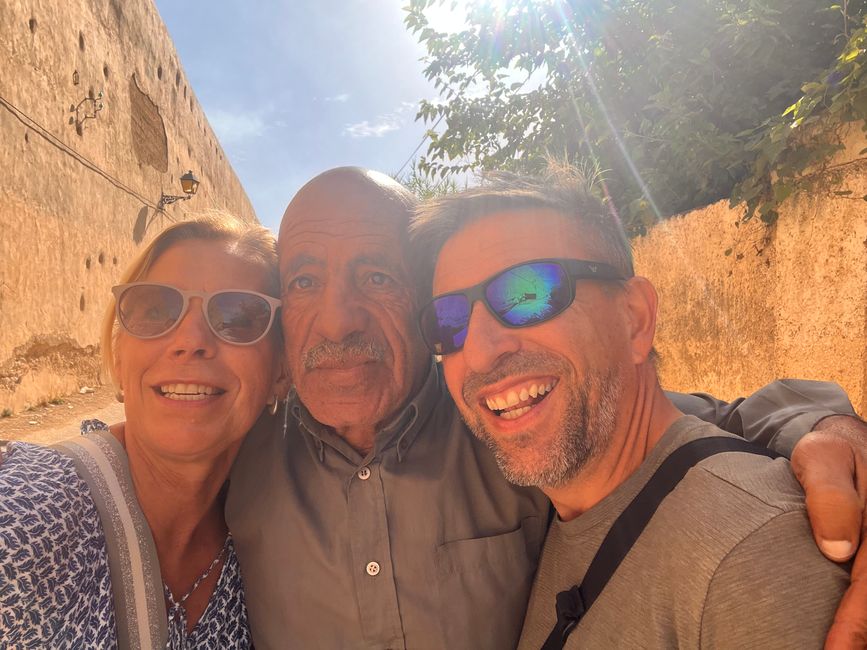
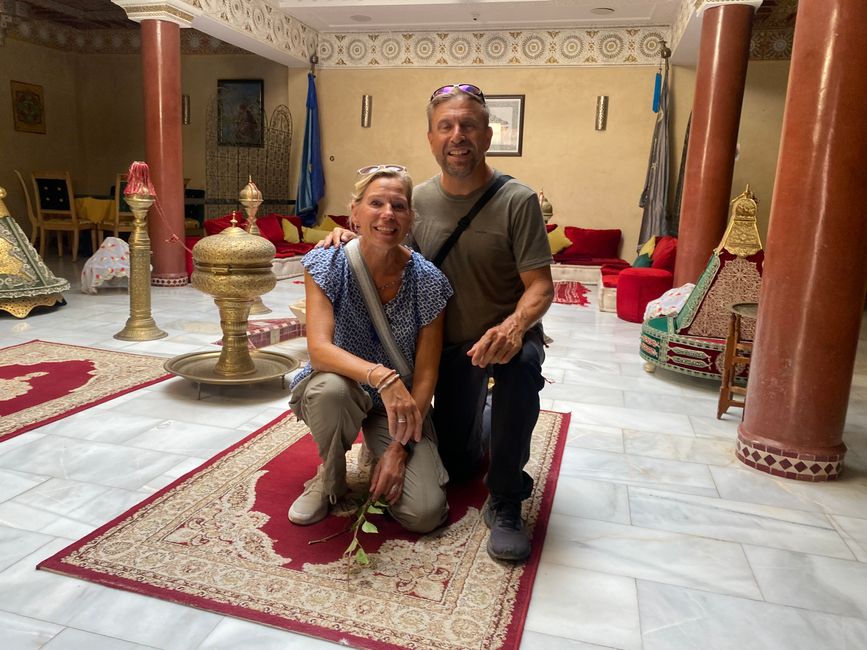
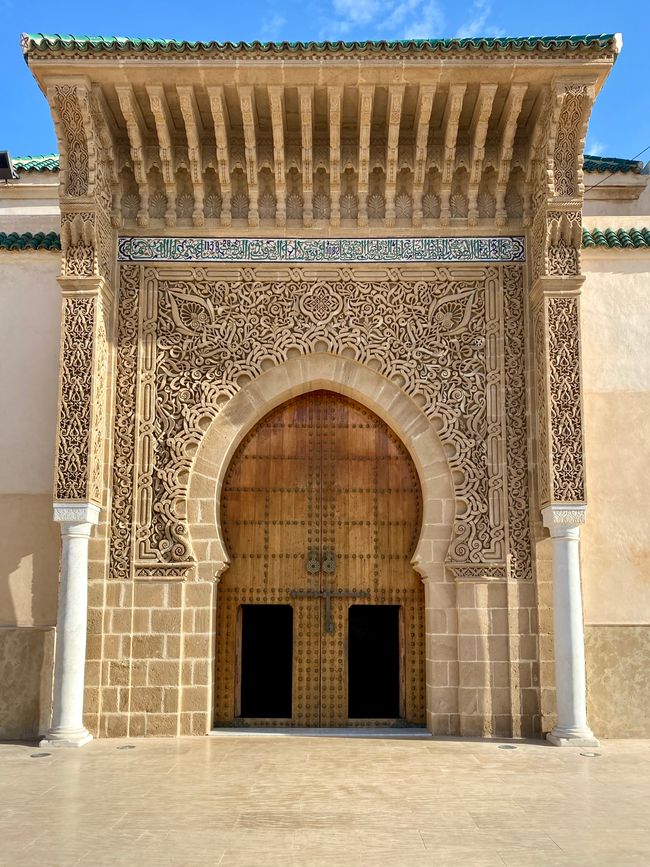
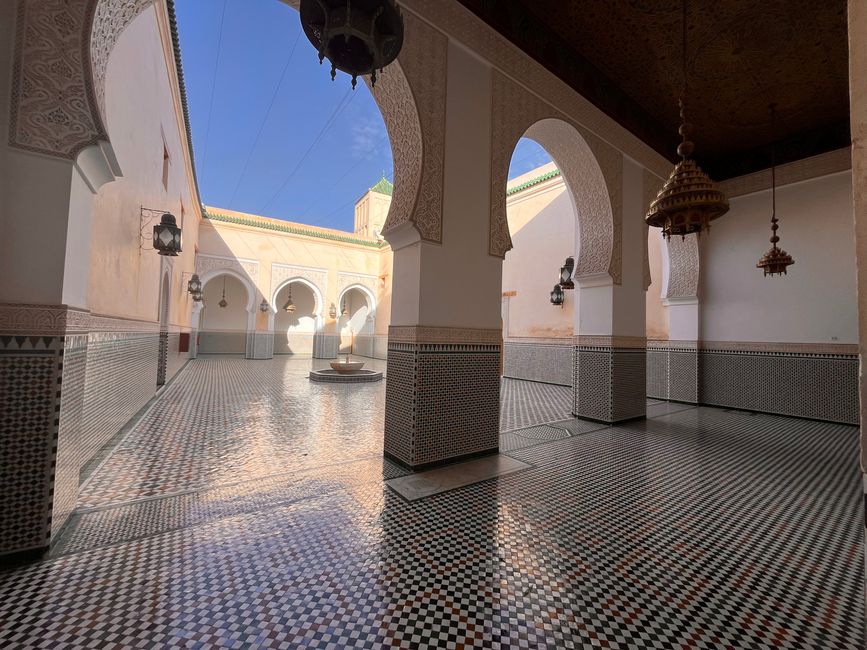
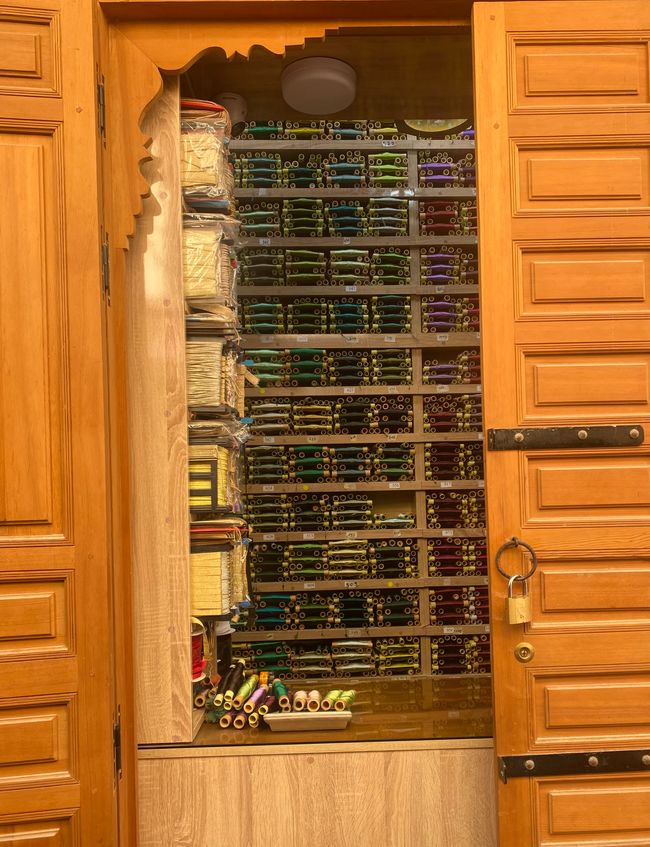
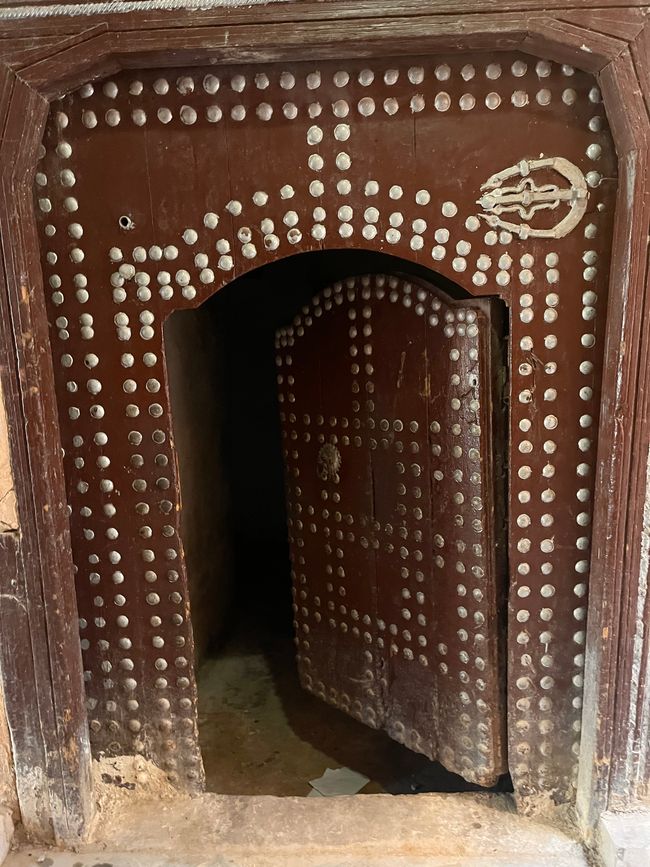
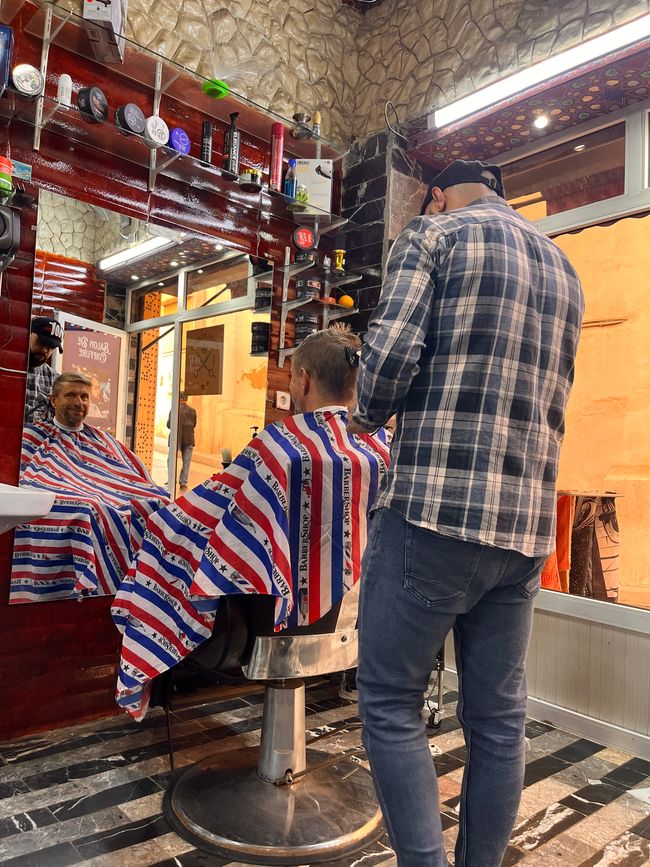
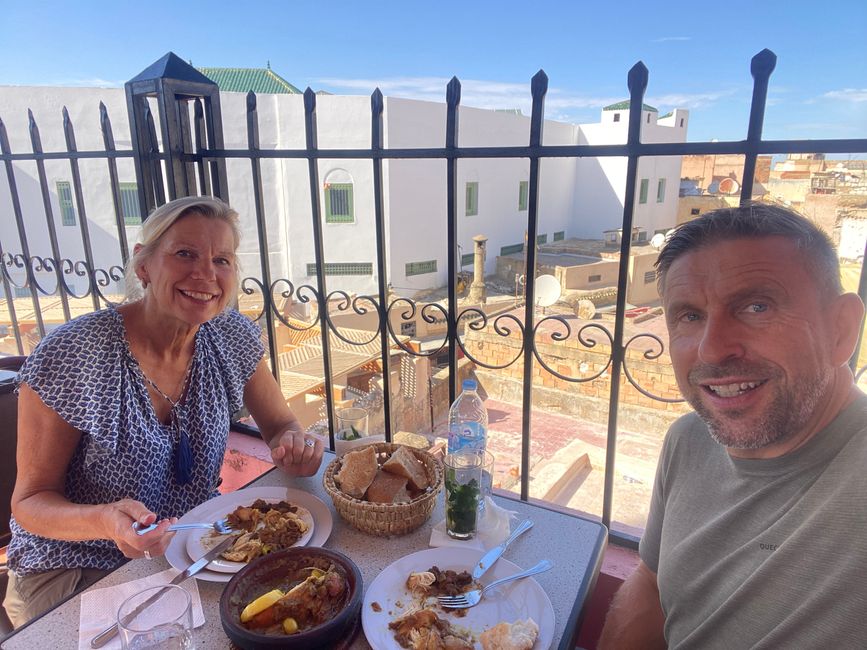
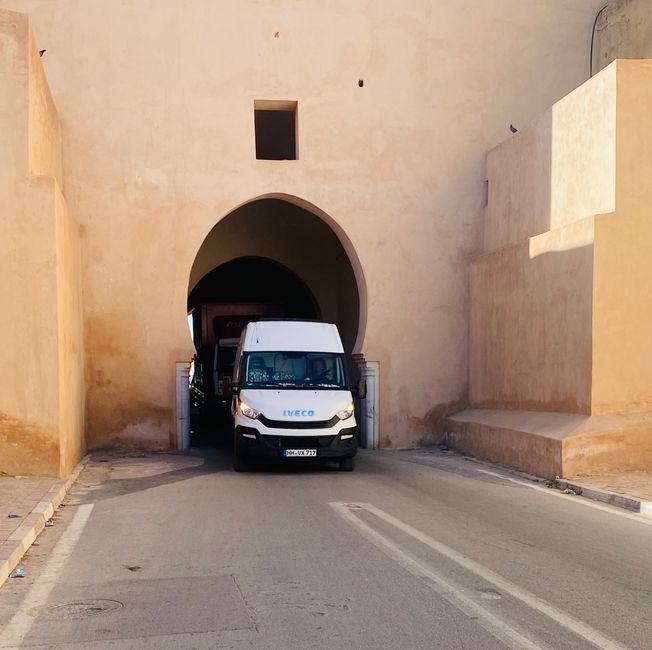
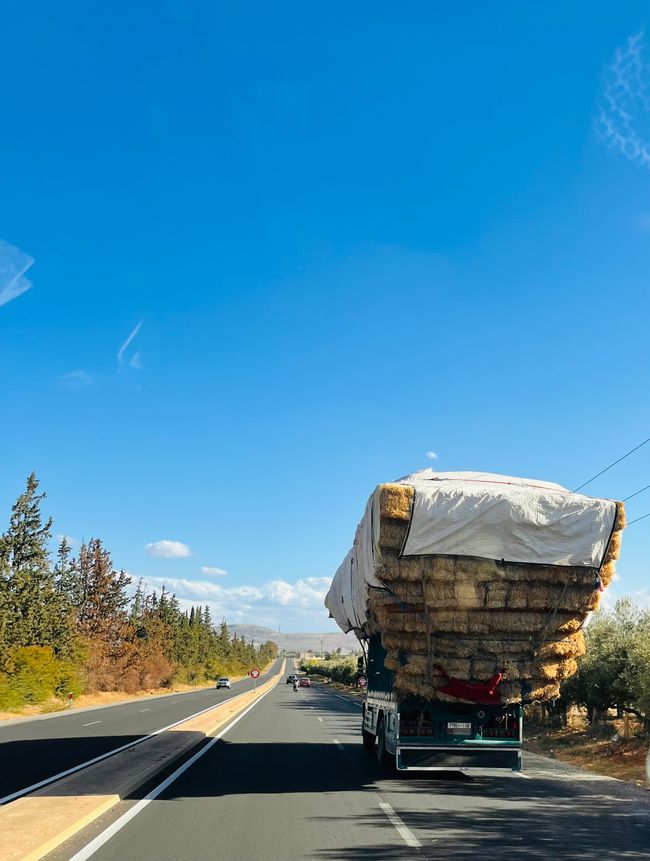
समाचार पत्रिका के लिए सदस्यता लें
Personal log entry from the houseboat Betty HH-VX 717: We are writing the year 2024, October 17, 3:00 PM
It's already past 3 PM, the sun is shining, and our DFDS ferry gently rocks without speed between Spain and Morocco in the swell. Actually, we should have docked at the port of Tanger Med over an hour ago, but together with two other ferries, we are idling in sight of Morocco's coast, and nothing is happening. We have successfully completed the Moroccan passport control, which conveniently takes place on board the ferry. Now we are curious about what awaits us at customs on land! Finally, at 4 PM, almost two hours late, we roll off the ferry onto Moroccan soil. Right after leaving the ferry, there's another passport check, and we are greeted with a friendly "bienvenue en Moroc". Is it really going to be this easy? Far from it!
We roll about a kilometer through the ultra-modern harbor of Tanger Med until we reach customs. There is chaos. There are various lines for vehicles, and initially, we are unsure where we should queue. To the far left is a long line of completely overloaded vans with mostly Moroccan license plates, apparently bringing goods to Morocco. The line looks like it could still be there tomorrow. After a while, a uniformed officer makes a small hand gesture, indicating we should join another line. Here, the x-ray inspection awaits us. And all the other European vans and motorhomes from three ferries are in front of us. This could take a while. After almost an hour, it's finally our turn, and we have to get out while Betty is screened with a mobile x-ray device. Made it, no weapons or drones on board! Now we proceed to actual customs control and join one of the perhaps 4-5 customs booths.
Here, we must wait again until a customs officer approaches us at a speed that hardly qualifies as swift. Drive to the right, hand over the passports, and then wait for what feels like an eternity. The customs officer, who visually resembles a cartoon version of a customs officer, has a method of working that would drive a efficiency-minded Northern European to despair. While he shuffles back and forth, our car is sniffed twice by sniffer dogs without success. Eventually, around 5:30 PM, I take the liberty of bringing him back to our attention. "Ah, vos papiers mon monsieur," he vaguely recalls us, and we finally receive the customs import receipt for Betty, which must have been prepared by his assistant in the customs booth long ago. Without this slip of paper, hardly the size of two credit cards, you would face serious problems when leaving. So keep it safe as gold!
Next, we quickly withdraw Moroccan money (Dirham, 1 DH = 9 cents) from one of the many ATMs in the port area and pass one last police check at the exit before we finally turn onto the main road almost two hours after leaving the ferry. Our destination is Asilah, a coastal town about 90 km southwest of Tanger Med. Since it's already relatively late, we prefer to take the motorway, which is, however, subject to tolls. The drive is relatively uneventful. The motorway is almost completely empty, and we delight in spotting the first dromedaries alongside the road. At the Asilah exit, we do pay a hefty 7 euros for approximately 70 km on the motorway and wonder which locals can afford that here. We certainly won't be taking the motorway again if we can avoid it. As in every Moroccan city, there is a police checkpoint at the entrance. If the sign says 'Halte', you MUST stop until waved through; otherwise, there will be serious trouble. If the sign says 'Ralentir', you may pass very slowly. Foreigners like us are usually waved through.
We were in Asilah back in 1984 on our first Interrail tour together. The city has grown significantly since then, and we drive through large new residential areas into the city. Despite various warnings from Moroccan travel guides, we are shocked by the sight of the large amounts of scattered garbage and the many stray dogs. But this is Morocco, not Germany, and we must not impose our standards. Asilah is located right by the sea, and we admire the high waves of the Atlantic from the seafront. We then head to one of the two campgrounds in Asilah, both very close to the water, and we convince ourselves that it's the same one we visited in 1984! Here, we receive a warm welcome in German from a young Moroccan who shows us around. Campgrounds in Morocco are very affordable. Prices range from 5 to a maximum of 10 euros per night. The standard is usually basic, and sanitary facilities can often be a bit rustic. But the warmth and helpfulness of the operators make up for it. We stroll along the impressive waterfront (the widest we have ever seen) before ending this exciting day with a glass of wine in front of Betty.
We spend the next two days in Asilah, slowly getting into the Moroccan groove. Asilah has a beautiful Medina that borders directly on the sea. White and blue tones dominate, and many artists living in Asilah have immortalized their artworks on the house walls. Before the Medina lie the souks, the shopping streets and markets. It's particularly lively here in the evenings, like in 1001 Nights. Street vendors everywhere offer their goods. Poor farmers lay out their merchandise directly on the sidewalk for sale. The sensory impressions of colors, smells, sounds, and the many people are overwhelming. At one stall, we buy the tastiest dates in the world. Such quality is not offered in Germany. By the way, the feared hassle is actually minimal; the vendors are pleasantly reserved.
Everywhere, we quickly engage in conversations with people, for example, in a beach cafe where we drink the famous The Menthe (mint tea) and delicious avocado juice. They are curious where we come from, how we like Morocco, and what we still want to see. Almost all Moroccans speak very good French (the second official language), and many can also manage a few phrases in English and German. Our French is quite rusty, but you learn quickly when you have to! By the way, the bicycle is also a good means of transport in Morocco to explore cities and regions. Especially children are always delighted to see you on a bike. Back at the campground, a baker suddenly appears around the corner selling cookies and pastries at our sliding door. Not quite cheap, but I can haggle him down a bit. Susi's (and my) opinion: The best pastries ever! In the evening, we eat our first tajine (stew) and our first couscous. The owner speaks surprisingly good German, and we enjoy a fun evening there. We walk back to the campground through the mystically illuminated Medina. By the way, we also meet Renate and Gerd from Austria again at the campground (small spoiler: when traveling by van through Morocco, you always run into each other again). Renate had approached us while we were waiting for the x-ray check at customs in Tanger Med because she liked our van design with 'SurfEx'. The two are super nice and have made some really exciting travels. For example, in the 1990s, they crossed China on a bike when it was officially still not allowed. When they are not traveling in their motorhome, they undertake long tours with their Ural sidecar motorcycle. Next year, they plan to travel across South America. Respect!
The next day we head towards Moulay Bousselham, also located on the Atlantic. There is supposed to be a huge saltwater lagoon where I might be able to try wingfoiling? On the drive there, we pass through enormous fruit and vegetable farming areas. Everywhere, heavily masked workers are packed together in open pickups and trucks, being driven to their workplaces against the ever-present dust. Let's see if anyone in Germany complains about their working conditions... Once in Moulay, we head straight to the beach. This is located a bit outside the city along a lavish, totally oversized promenade. We are almost alone there, and the whole promenade looks as if it is rarely filled with guests. Unfortunately, the waste problem in Morocco is also evident here on the beach. Plastic litter is everywhere. The waves are very high, and cautiously, I venture into the water for a swim, which is quite a pleasant temperature. We spend the night close to the lagoon on Khalid's farm. The approach leads along an unpaved road through a slum-like residential area, past cheerful waving children. The farm is a small oasis, and Khalid and his family are very nice, hospitable people. During a walk to the lagoon, we meet Belgians who are overnighting with their motorhome at a restaurant. We are invited for a beer and get many tips from them, as they have been to Morocco many times. The next day we are leaving Moulay again: the place itself is not very attractive, and the lagoon is not suitable for wingfoiling as it is too shallow.
We have decided to turn away from the sea for now and explore the interior. As the Belgians said: the interesting part of Morocco is not the coast, but the interior... We drive east towards the Rif Mountains. The roads are relatively well constructed, but the condition varies greatly. Everything from perfect to pothole-filled tracks is present. Donkey carts and horse-drawn carriages are normal traffic participants. Once, a horse cart even came toward us on a four-lane road! But the Moroccans are cautious drivers, and somehow everything flows smoothly together. The standard delivery van in Morocco is, by the way, the Mercedes Transporter 207 or T1, which was produced until 1995. It seems that every T1 ever built is now in Morocco, both as delivery vans and intercity buses, always overloaded and crawling up steep hills at 20 km/h. But the drivers love their vehicles, which they often decorate with affection and can be repaired by any village blacksmith with a hammer. Along the way, we do some shopping. We need milk, bread, vegetables, fruits, and a Moroccan SIM card. We take care of that in Ouzzane, the provincial capital of the Rif Mountains. In the small shops, the prices are not marked, and we have to develop a sense for the prices. Milk and water are relatively expensive (almost like at home), while bread, vegetables, and fruits are incredibly cheap, even if we sometimes surely pay a small tourist markup.
For the Rif Mountains, we have found another overnight option at a farm through Park-4-Night. The approach takes us along the N13 country road through gently rolling agricultural land. By the way, cannabis is grown here, and the Rif Mountains are the largest cultivation area in North Africa. The situation is complicated. Cultivation for medical or cosmetic purposes is now legal, but most of it still supplies the drug needs of Europe, and the Rif Mountains are a no-go area for Moroccan authorities. The access to the farm is hard to find, so we stop on the N13 to orient ourselves. As almost everywhere in Morocco, within moments a stray dog appears, hoping for food. These dogs are always very peaceful and shy, and they are more afraid of us than we are of them. Our leftover bread from the previous day is cautiously sniffed and then gratefully devoured. Even the dog treats we always have with us are gladly accepted. With the help of Google Maps satellite images, we finally find the Dar Kabira farm, which is located on a hill. We are warmly welcomed by Monim, the owner.
Monim lives with his extended family (and donkeys, mules, chickens, and dogs) on the property, which consists of several houses and huts that he has largely built himself. He proudly shows us how to make mud bricks, or how to create a roof from bamboo and clay. We are invited to participate in the family's meals for a small charge. Before eating, we all play Uno together, the game that connects nations. At the table, there is also an older French couple, who are the only ones with their motorhome on the farm. This greatly helps communication since our French is (still) very clumsy. Monim's wife is a wonderful cook. Dinner, such as a tajine, is served in a large bowl in the middle of the table. Self-baked bread from the clay oven serves as a
समाचार पत्रिका के लिए सदस्यता लें
उत्तर (6)
Sabine Müller
Beeindruckender Reisebericht. Wundervoll was ihr so alles erlebt. Liebe Grüße, Sabine 🤩Karin
Wie immer ein sehr spannender Bericht, ganz toll geschrieben. Genießt die Zeit. LG Karin Majka
Viel Spaß weiterhin bei eurer Reise. Es macht Spaß euch zu folgen 😀Katja
Wundervolle Eindrücke, die ihr mit uns teilt vielen Dank. Sehr spannend alles, toll, dass ihr so netten Menschen begegnet seid. Ich freue mich immer sehr, wenn es wieder heiKatja
heisst, ein neuer Reiseberich steht online.
Viel Spaß weiterhin.Koli
Ja sauber! Deine Bildsprache bringt einen ganz nah ran an Euch. Ich spüre die Aura des Zollbeamten vor mir 😂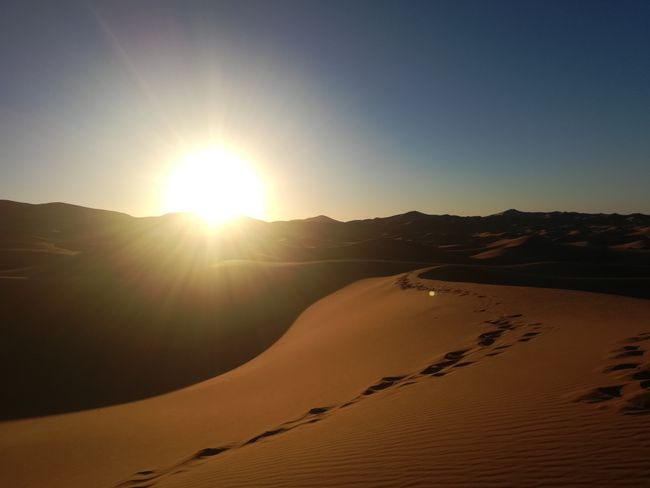
यात्रा रिपोर्ट मोरक्को
